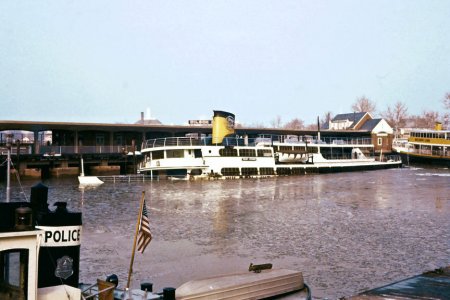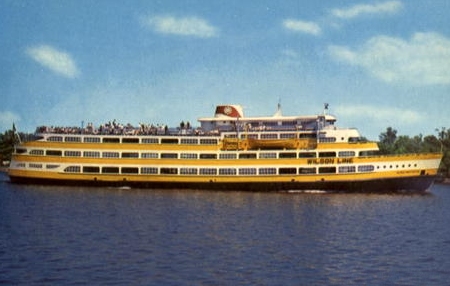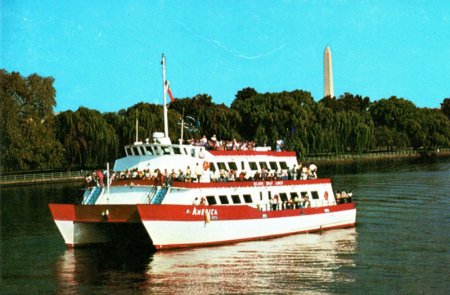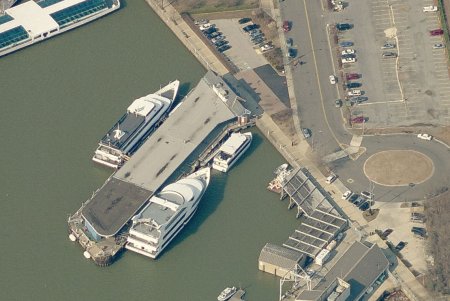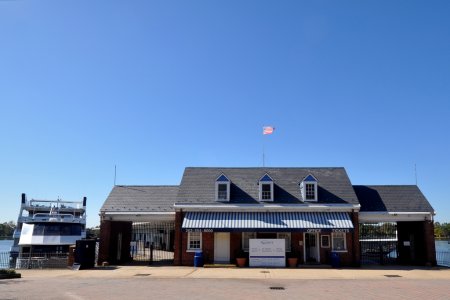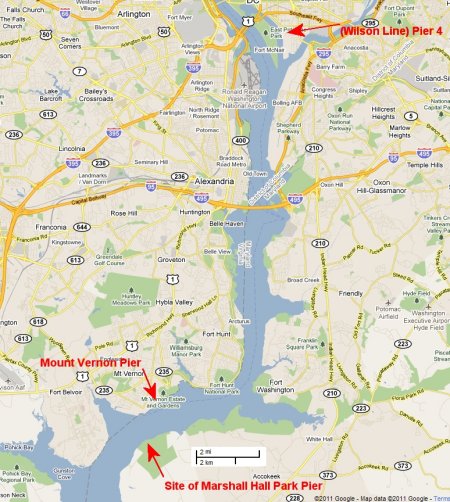 |
S.S. Mount Vernon
The Wilson Line had its main office in Wilmington, Delaware and was founded in April 1881 by Captain Horace Wilson as the Wilmington Steamboat Company. They operated excursion boats between Philadelphia and Wilmington and then across the Delaware River to Riverview Beach in Penns Grove, New Jersey.1 Wilson himself would later serve a term as Wilmington's mayor.
Marshall Hall initially was a mansion built in the early 18th century by Thomas Marshall on his estate on the bank of the Potomac in Maryland, almost directly across the river from Mount Vernon, the estate of George Washington in Fairfax, Virginia. In 1884 it was bought by partnerships interested in commercial ventures and sold in 1889 to the Mount Vernon and Marshall Hall Steamboat Company. They then operated the steamboat Charles Macalester twice a day and midsummer evenings from Washington down the Potomac to Mount Vernon and across to Marshall Hall.2
With its 400 acres, largely undeveloped, and free admission, Marshall Hall became an area attraction and most of its traffic arrived by boat. It featured a small Victorian amusement park, beautiful groves and picnic tables, athletic fields and rest rooms and from the beginning of the park's history, annual jousting tournaments where mounted contestants charged and attempted to spear a dangling ring that gets progressively smaller in the course of elimination. The park was owned and operated by the shipping company, as were most of the rides while others were leased.3
In 1929 the Wilmington Steamboat Company was purchased by a syndicate of Wilmington and Philadelphia interests headed by George B. Junkin and was renamed the Wilson Line, Inc. They became one of three companies at the time that ran excursion boats out of Washington on the Potomac.1 The cruises also featured nightly dancing to many of the local area bands and orchestras contracted in that area by people like Lester Lanin and Meyer Davis.3 During the '30s the Wilson line operated the City of Washington for its excursions from late April to September advertising that a "large ballroom on the observation deck makes dancing a feature of all trips."
They reopened, however, the following season on May 19th and the Wilson Line was granted sufficient fuel to run the S.S. Mount Vernon three round trips daily. With the addition of bus service to Marshall Hall from Indian Head, MD, the park broke all previous records in attendance and gross business.3
The late '40s saw a large growth in business with the S.S. Mount Vernon experiencing some of its best seasons, especially in its moonlight bookings. The park saw the construction of a roller coaster and several new rides and by 1950 had installed a new water system, new wiring and paint and in addition to new rides boasted a Tilt-a-Whirl, Ferris wheel, miniature train, Kiddie Rides and Merry-Go-Round along with a shooting gallery and penny arcade. Most of the patrons still got there by boat though with parking for 2400 cars, about 30 percent came by car.3
Connie Barriot Gay came from Lizard Lick, NC, and during WWII worked on the USDA's "National Farm and Home Hour," as a radio announcer when he discovered that half the residents of the nation's capital had transplanted from the South and that D.C did not have a radio station that catered to "hillbilly music." In 1946 he started a thirty-minute "hillbilly" show on WARL, in Arlington Virginia, the first devoted to that music in the area which soon became the "Town & Country Time" show running three hours daily." He registered "Town & Country" as his service trademark and is credited as one of the first to coin the term "country music," in place of "hillbilly." 5 In the late forties when television came in he started buying up little radio stations all over the country, establishing his Town & Country Network. He saw the music's entertainment potential for TV and tailored his product for the broadest possible audience. Gay saw the demand for live concerts and took country music to venues normally reserved for more uptown fare with live events featuring big name talent like Hank Williams, Ray Price and Hank Thompson. In 1947 he booked the DAR's Constitution Hall for two nights for a package show headlined by Eddy Arnold, then managed by Colonel Parker.5
Gay reputedly developed "a kind of unspoken gentlemen's agreement" with Jim Denny of the Opry, Colonel Parker and other powerful Nashville promoters like Oscar Davis and Joe Frank that gave Gay exclusive access to Opry acts in the Mid-Atlantic States, almost like a regional franchise. According to Gay, "I got Washington and the Northeast. They thought the East was the short end of the stick, but that was where the money was, in the media." He ran excursion trains from Washington, Baltimore, New York, Boston and Philadelphia to the Grand Ole Opry. By the early '50s he started booking the Wilson Line for his "Hillbilly Midnight Cruises" on the Potomac.5
Some of Gay's earlier shows on the cruises featured many Opry acts along with others that included The Maddox Brothers and Rose (stars of the Louisiana Hayride) with Marty Robbins, Ernest Tubb, Billy Johnson and newly signed Jimmy Dean.3 Dean, originally raised in Plainview, TX, after his discharge from the Air Force in 1948, remained in the Washington area to form the band the Texas Wildcats that at one time featured guitarist Roy Clark. Under a management contract with Gay and paid a weekly salary, he got a record deal with Four Star records and in 1953 his first single, "Bummin' Around," became a Top 10 hit. He soon was the host of Town & Country Time on WARL.6
In 1953 Dean and his band also backed Patsy Cline at The National Country Music Championship at Warrenton Fairgrounds in Virginia though she lost to Scotty Stoneman of the Stoneman Family. The following year she entered and won backed by Bill Peer's band, and caught the eye of Connie B. Gay, the events head honcho and emcee. Beginning that summer, Gay frequently booked Patsy as the girl singer with Jimmy Dean and the Texas Wildcats.5
By 1954 he started filming Town & Country Time shows in color at Byron Studios in Georgetown for distribution to regional and local television affiliates. In January of 1955, after eight years on WARL, Town & Country Time became a live daily television show broadcast weekdays at 5:30 p.m. headed by Jimmy Dean and the Texas Wildcats and Mary Klick. At that time, WMAL's studios were located at the "Evening Star Television Center" at 4461 Connecticut Avenue NW, formerly the Chevy Chase Ice Palace. By October of that year he also had a weekly three hour country music show, the "Town & Country Jamboree," that aired on WMAL Channel 7 from Turner's Arena.3
Also in 1955 the Wilson line fleet and wharves were purchased by the City Investing Company of New York in a deal that involved all physical assets of the line, its boats and properties, including Marshall Hall Park. By this time the line was operating eight boats serving the Philadelphia and Delaware area, Baltimore and Eastern Maryland shore, a Washington-Boston run, Boston to Nantasket Beach and to Provincetown and in the New York area to Rockaway Beach and for charter work.3
Soon after, the company announced that Marshall Hall Amusement Park and the S.S. Mount Vernon were to undergo $250,000 in improvements and reconditioning. About $100,000 alone was spent on the boat to have Ballard & Company of New York paint the boat yellow with white accents, improve the dance floor, install several restaurants; new lighting and a steam calliope and replace stiff bench seating with comfortable foam rubber cushioned aluminum.3 By January 1956, "Town & Country Jamboree" was the most popular homegrown musical TV show in the region, with an audience estimated at more than half a million. By March Gay had severed all radio connections with Arlington, VA as he expanded ownership and Town & Country Time was broadcast on radio daily and television every night from 6:00 - 6:30.3
As of March 15, 1956, Bob Neal's contract as Elvis' manager had run run out leaving the way clear for the Colonel.7 According to Patsy Cline biographer, Margaret Jones, Gay had been reputedly approached by the Colonel with an option to buy into a piece of Elvis' contract. The Colonel arrived at WMAL one day shortly after signing a booking arrangement with Elvis and Jamboree Attractions, the Madison, Tennessee, operation he ran with his main client, Hank Snow. "I've got a boy down here who wiggles his hips and everything. Don't sing too much or anything, but I'm going to give you a chance to get a piece of the action," he told Gay. Gay wasn't impressed. "No thanks," he replied. "I've got Dean and his boys. I've got my hands full. I don't need anything like that." 5 It's quite possible that the unspoken agreement between Gay, the Colonel and the Opry was a contributing factor that until this time Elvis and the boys had never played any dates in the Northeast and, aside from Philly the following year, would not again. Since their association with the Colonel began, they pretty much played the circuit of venues in the South established early on by promoters like Oscar Davis and others. In any case, on March 23, 1956 Gay had booked Elvis, Scotty, Bill and DJ for the season's first "Country Music Moonlight Cruise" on the S.S. Mount Vernon, which perhaps due to the new ownership of the line, appears to have started earlier than previous seasons. They had played in Richmond the night prior and were due in New York the day after. Ads were run in the Washington Post and Times Herald newspaper as well as the Evening Star. Paul Herron in his On The Town column announced:
On the day of the show Elvis made a brief appearance at the WMAL-TV studio to promote the show that night on "Town & Country Time." Dean later wrote in his autobiography:
It is surprising that Patsy and Elvis never met, considering his visit to WMAL and their proximity at this time. According to Jones, Patsy was a fan. She loved Elvis's image and his power and his music and pasted his picture prominently on the back cover of the scrapbook she kept that tracked her life and her career. "Yeah, she loved him." said Pat Smallwood. "She used to bop and boogie and get down with all his first records." 5 The forecast for the 23rd was partly cloudy with a high around 48 degrees, though by evening it got much colder.8 Melvin Price, a country singer from Easton, MD, along with his band was the opening act that evening. He had recorded during the '50s for Regal, Starday and Dixie Records.
According to Price, the deck was so packed, people couldn't dance; they could hardly move. Elvis came out with a policeman on either side. Maybe it was a touch dramatic, Price says, but maybe he did need the protection, even then. Price remembers getting trapped in the squeeze of the crowd between a steel guitar and a middle-aged woman. "She pinned me there," he said. "You couldn't move.…You simply could not move." Elvis broke three strings. "He just pulled the guitar off his shoulder, and it slid across the stage," Price says. "He just said, 'I'll be back.'…It was that little bit of attitude. The audience loved it." Between sets, the musicians shared a dressing room. Price couldn't do more than say hello, though, since the future king "was pretty well occupied with women hanging on him." 9
There were no formal reviews for the show(s) but Bill Gold in his column in the Washington Post and Times Herald on the 27th responded to readers who wrote in complaining that the S.S. Mount Vernon actually never left the dock that evening:
Following the show on the S.S. Mount Vernon, the boys left for New York for their sixth and final appearance on the Dorsey Brother's Stage Show and CBS Studio 50, delayed by a snow storm. From there Elvis remained in New York prior to flying to Hollywood for his screen-test. Scotty, Bill and DJ started the drive back south in the storm that night, but stopped in Dover, Delaware, to visit Carl Perkins and his brothers in the hospital. They had been involved in a car accident while driving to New York to appear on the The Perry Como Show.7
A telegram had previously been sent from Richmond on the 23rd, the day of the cruise, either by Elvis (misspelled as "Alvis"), or on his behalf along with Scotty, Bill and DJ to Carl wishing him and his bothers well. On March 26 the Colonel's new status as "sole and exclusive Adviser, Personal Representative, and Manager in any and all fields of public and private entertainment" was formally ratified and his 25 percent commission reaffirmed at the same time.7 Patsy's career didn't really take off until her appearance in 1957 on Arthur Godfrey's Talent show when she performed Walkin After Midnight. She would soon ditch the western attire too.5 That same year Dean would host a network television show on CBS called The Jimmy Dean Show (the first incarnation). In 1961, he released the single "Big Bad John," which hit No. 1 on both the country and pop charts and earned him a Grammy award.6 Both he and Cline were no longer with Connie Gay who himself had in 1958 become the founding president of the Country Music Association in Nashville.
By 1957 Wilson Lines had absorbed the Meseck Steamboat Co. and its service to Playland at Rye, NY and Pleasure Beach in Bridgeport, Conn. Though it sold its operations in Philadelphia, in addition to Marshall Hall, it was serving three other amusement areas; Rowes Wharf in Boston to Provincetown and to Paragon Park in Nantasket; Yonkers, N.Y., and Jersey City and New York, to Rockaway's' Playland, New York. At Marshall Hall Park they built an additional 200 foot long pier for the heavy traffic of private boats near the excursion boat pier, which itself had been rebuilt for the fourth time since its original construction. With the construction of a new highway with a right of way straight to the park, it saw increased auto business.3
Like several competing amusement parks in Maryland, and elsewhere at the time, Marshall Hall Park was segregated and by the sixties was under pressure by civic and community groups and also court order to desegregate. Because of this, in 1961, students at George Washington University voted to discontinue their annual "Colonial Cruise" aboard the S.S. Mount Vernon to Marshall Hall.10 1961 also saw the passing of a law protecting the historic setting of Mount Vernon and anything in its view against commercial and industrial development, though at the time it excluded Marshall Hall.2
The S.S. Mount Vernon would see service through 1963. On January 5, 1964, while docked for the winter a seacock (valve on the hull) aboard the vessel froze and cracked causing it to take on water and settle on its keel, partially submerged.* It stayed that way for several months before it was raised and never again saw service as an excursion ship. Salvage rights were sold to the Seafarers International Union in 1967 and it was renamed the Charles S. Zimmerman and converted for use as a floating dormitory at the Harry Lundberg School of Seamanship on Chesapeake Bay. It was believed to have been scrapped in the eighties.4
The Wilson Line then replaced the S.S. Mount Vernon for its Potomac River cruises with its M.V. George Washington, formerly the steamer Hudson Bell. Like the S.S. Mount Vernon, it departed twice daily for excursions to Mount Vernon and Marshal Hall Amusement Park in addition to special charters and evening cruises.
The Wilson Line sold the Marshall Hall Amusement Park to Marshall Hall Development Corporation in 1966 which demolished most of the structures on it to make way for a modern amusement park. In 1969, it was sold to Joseph Goldstein and Star Enterprises with big plans to enlarge it to a theme park called "Spirit of America."2
In 1972 the US Government paid Goldstein $900,000 not to further develop the land and in 1974 authorized the National Park Service to purchase the 446 acres at Marshall Hall and an additional 179 acres with $4.9 million in funds appropriated in 1976. The 1976 bill set January 1, 1980 as the phase-out date for Marshall Hall Amusement Park. Unfortunately, in 1981, arsonists gutted the 256 year old plantation house on the property.2
By the eighties the Wilson line had replaced the steamships for excursions to Mount Vernon with three diesel powered catamarans each with a capacity of 394 people.
WMAL-TV later became WJLA and in 1988 moved from the old ice palace building to the Intelsat Building several blocks south. The owners of the old building then embarked on an extensive renovation and remodeling of the space adding two large towers in the center. It has since operated as a mixed office and retail complex known as Van Ness Square.11
Today, the large excursion ships are back on the Potomac, though they no longer go to Marshall Hall. The original Wilson Line ticket office at the head of Pier 4 now serves excursion boats and Spirit Cruises on the Spirit of Mount Vernon to Mount Vernon from March to October. You can also choose from one-way excursions and 40-minute turnaround cruises from the Mount Vernon dock.
page added May 4, 2011 Special thanks to Kenneth Despertt of the Special Collections Library of the DC Public Library in Washington for his assistance with ads and articles for this page. * We initially had believed and stated that the S. S. Mount Vernon had sunk while in winter storage at its home port of Wilmington, DE but thankfully B Dunlap noticed the error and gave us the correct location of Pier 4 in Washington in addition to a photo. July 27, 2016
1
according to or excerpt from Old Chester, PA: Transportation: The Wilson Line
|
||||||||||
|
All photos on this site (that we didn't borrow) unless otherwise indicated are the property of either Scotty Moore or James V. Roy and unauthorized use or reproduction is prohibited. |

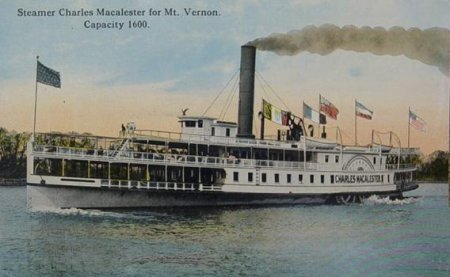
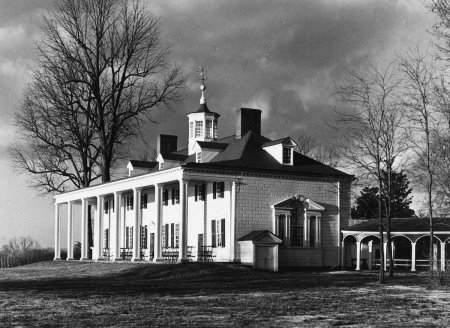
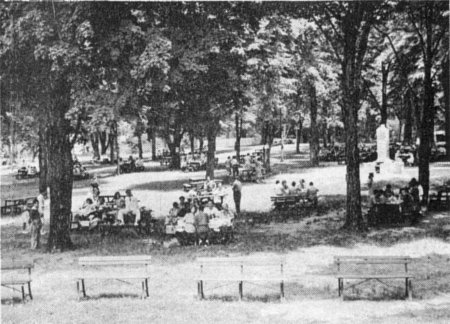
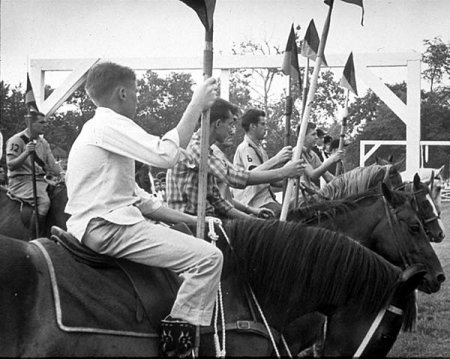
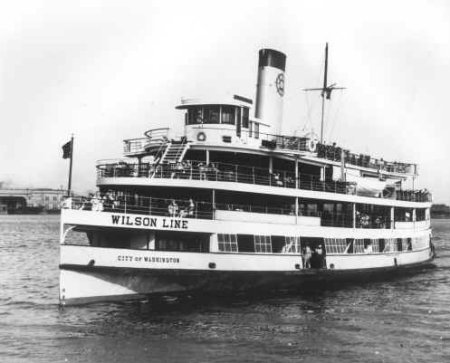
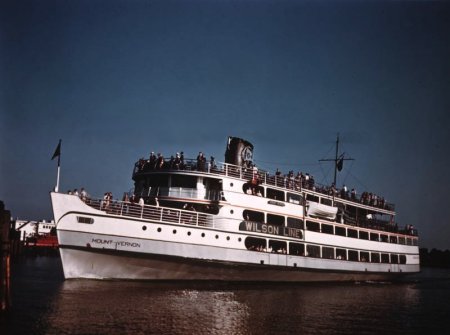


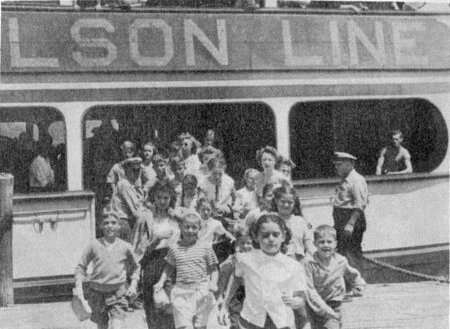
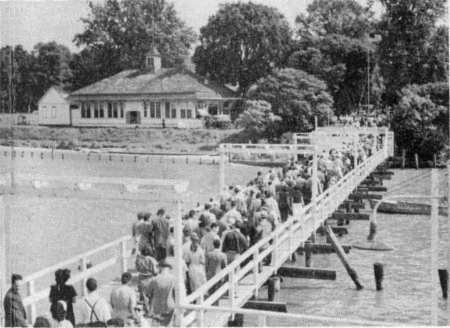

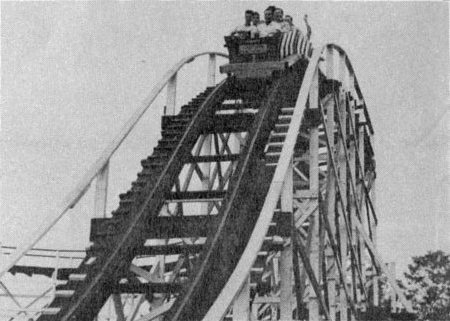

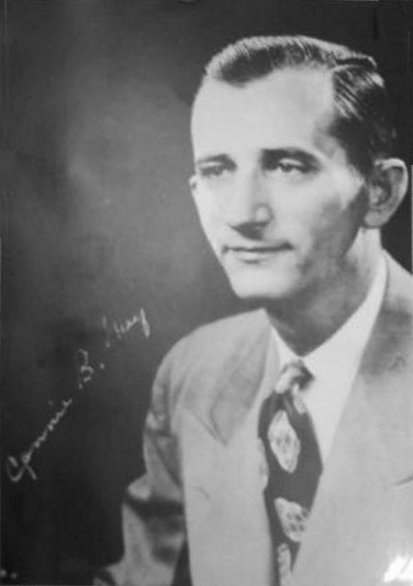
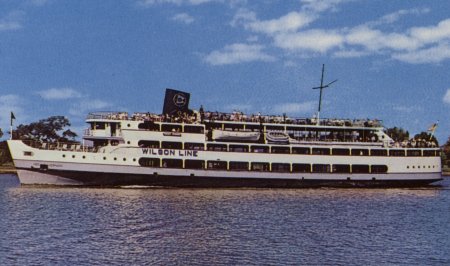
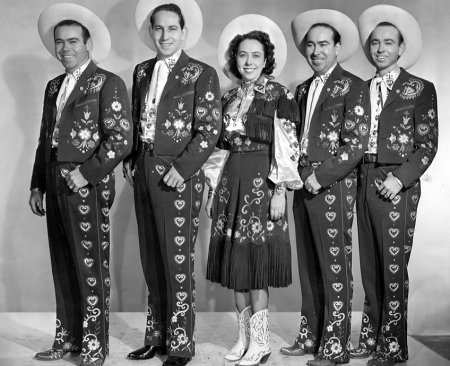
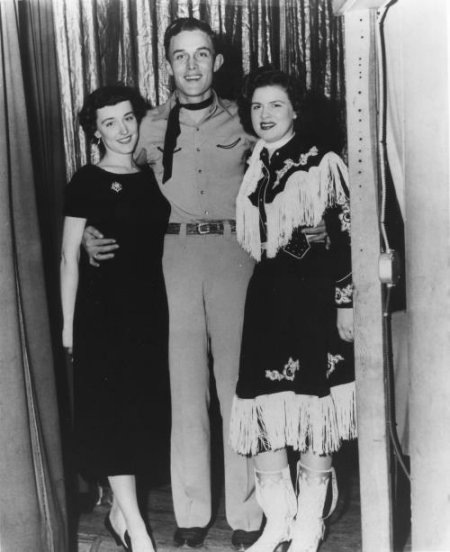
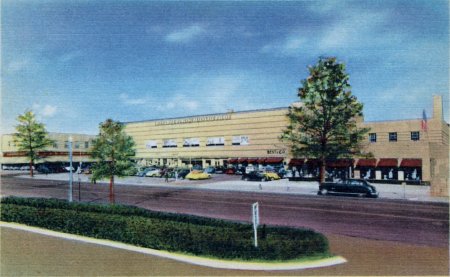
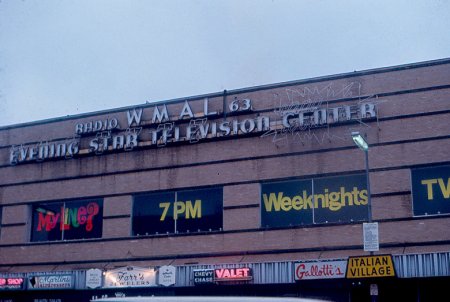

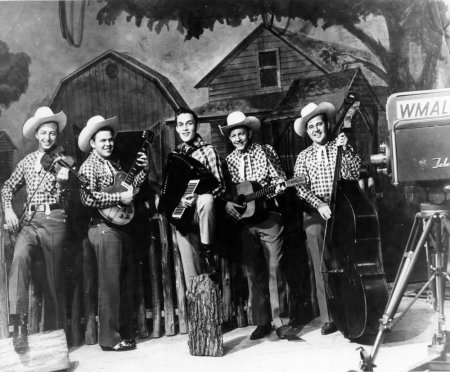
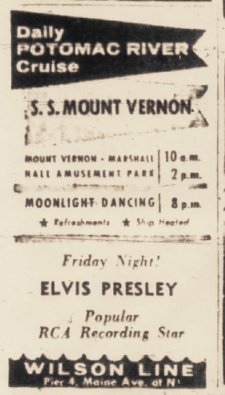
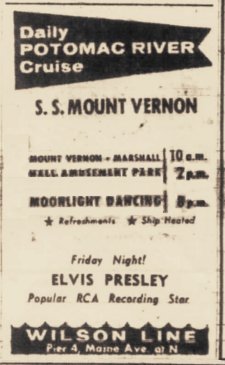
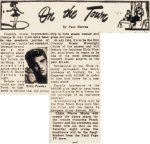 By Paul Herron
By Paul Herron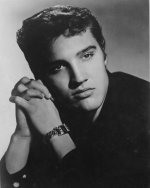
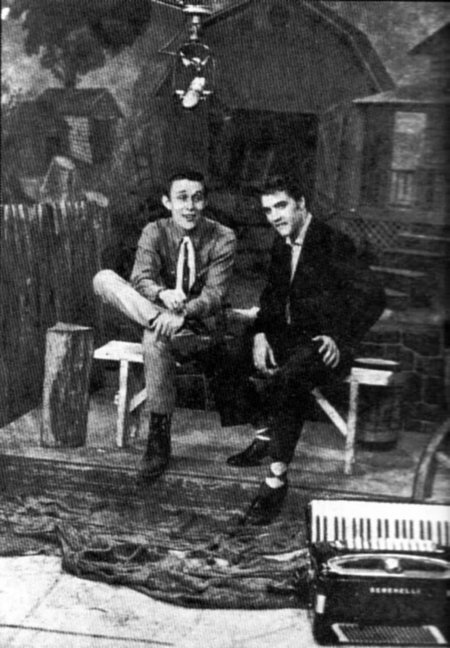

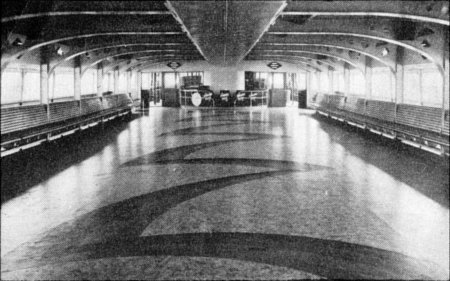

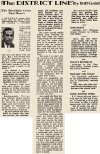 The
DISTRICT LINE by Bill Gold
The
DISTRICT LINE by Bill Gold




